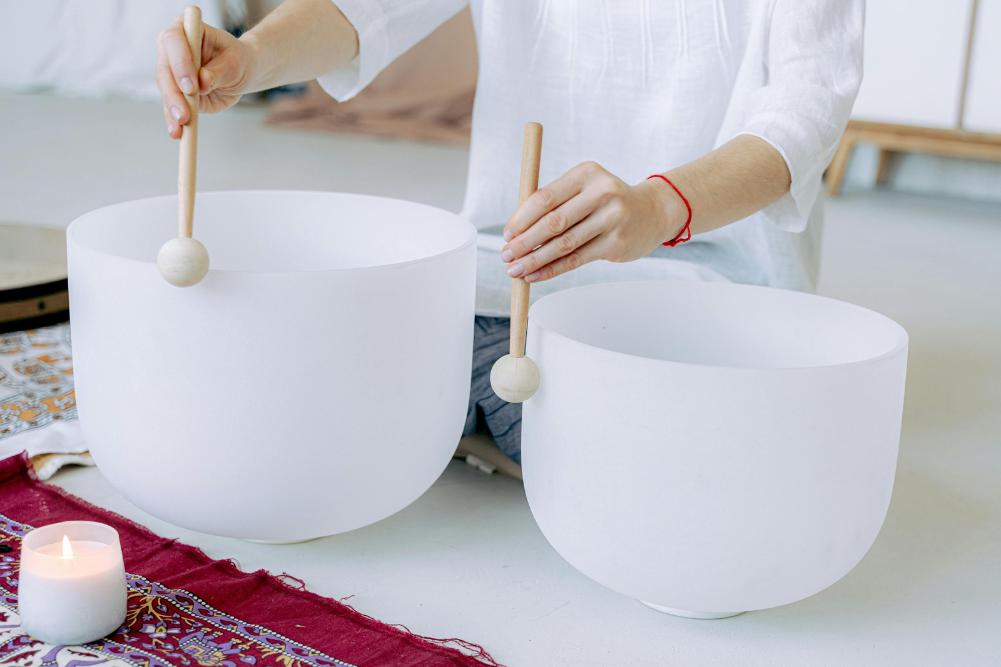The benefits of lending a helping hand
Every year in Australia, about 4.4 million people volunteer. If you are one of those volunteers, you probably have a philosophical commitment to helping others. Did you realise, though, that your altruistic act was doing you good as well?
As well as helping others, acts of altruism help you to learn new skills and meet new people. Yet beyond these effects there are unexpected perks. The University of Chicago has done research into altruistic behaviour and found that women are more likely than men to feel empathy and feelings of empathy and altruism are unrelated to financial status. Yet the standout finding from this research is that altruistic feelings have measurable benefits, not only for the receiver but also for the giver.
Altruism, stress and the brain
In Cleveland, Ohio, the Institute for Research on Unlimited Love studies the benefits of altruism, which it defines as “unselfish benevolent love”. Esther M. Sternberg, a research professor who authored The Balance Within: The Science Connecting Health and Emotions, wrote a paper for the Institute. In it she examined mechanisms by which altruistic love affects health, concluding that caring may suppress disease activity and activate immune response.
Sternberg says altruistic love may heal by lowering stress. This is important. The stress-state produces terrible effects through both mind and body. The American Psychological Association states that “psychologists have long known that stress impacts our ability to fight infection”. During stress the brain releases unhealthy chemicals and hormones. This affects our immune cells’ operation, reducing their ability to fight infection and inflammation.
Relaxation rewards
Improved immunity is only the first benefit of altruism. Sternberg says, “It is also possible that altruistic love might activate certain aspects of the ‘relaxation response’ in addition to blocking aspects of the stress response.”
The relaxation response is the opposite of the stress response. The stress response causes an increase in heart rate, stress hormones and blood pressure while slowing digestion. In contrast, the relaxation response allows our heart rate, blood pressure, digestion and hormonal levels to return to normal.
The relaxation that arises from altruistic acts also helps the body stop pain. Allan Luks, executive director of the Institute for the Advancement of Health, coined the expression “helper’s high”. This feeling mirrors the calm after a good workout. In the 1980s, while working as executive director for New York’s Big Brothers Big Sisters, Luks surveyed thousands of volunteers about their experiences. From the results he theorised that helping people creates pain-killing endorphins.
Since then, multiple studies have supported Luks’ hypothesis. One, published in 1998, found that this helper’s high is healing. From two surveys with a total of 1746 participants, the Institute for the Advancement of Health concluded that helping-induced relaxation was linked to pain relief, particularly in stress-related disorders including lupus, multiple sclerosis, voice loss and headaches.
Good vibrations
Those same surveys revealed that helping produces pleasant feelings and sensations. A majority of participants described these as physical and locatable. Half of the people writing about their experience described feeling high, warm and an increase in energy. This was most intense during touching or listening to someone. Remarkably, a majority of the study participants said these feelings would reoccur, although muted, when they remembered helping. Many other studies have similar conclusions.
A 2003 New Zealand study of 115 low-income older adults found that altruistic activity, in this case volunteering with a federally subsidised delivery program, predicted a positive mood. The effects of altruism on a happy mood are well recognised throughout the medical world. Dr Kathleen Hall, a world-renowned expert in stress and founder of the Stress Institute, says, “Altruism creates a physiological response or ‘helper’s high’ that makes people feel stronger and more energetic and counters harmful effects of stress.”
The combination of positive feelings and increased energy is conducive to overall mental health. This isn’t just self-evident; it’s proven. A 2003 study published in the journal Psychosomatic Medicine found that churchgoers providing love, caring and support to others had better mental health than those receiving their care.
Study researcher Carolyn Schwartz, ScD, of the University of Massachusetts Medical School explained, “The act of giving to someone else may have mental-health benefits because the very nature of focusing outside the self counters the self-focused nature of anxiety or depression.” This outer focus also leads to a change in how people perceive their quality of life.
In medical terms, changing how quality of life is viewed is called response shift. “These shifts are purported to lead to a renewed perspective on one’s life circumstances, such as one’s illness, stressors, or personal loss,” says Schwartz.
However, she adds, giving beyond your resources is worse for mental health than not giving at all.
Live well, live long
Stephanie Brown, evolutionary psychologist at the University of Michigan, studied elderly people involved in giving. Her study profiled 423 elderly couples for five years. She found that people who provided no help, either practical or emotional, were more than twice as likely to die than their altruistic peers. In contrast, those who received help had no longevity benefits. Those helped included friends, relatives and family.
The results of other studies on altruism’s effect on mortality are similar. In a study of 2700 residents of Tecumseh, Michigan, researchers found that men who volunteered in their community were two and a half times less likely to die than non-volunteering men.
The effects of altruism on longevity don’t end with the physical. A 2003 report in The Journal of Gerontology concluded, “Older adults who volunteer and who engage in more hours of volunteering report higher levels of wellbeing.”
The lead researcher, professor Nancy Morrow-Howell, found that participation in what she terms “productive activity” is associated with lower depression rates, higher life satisfaction and better functional and mental ability among people aged 60 or older. The reason for this, Morrow-Howell explained to the American Society for Aging, is “because it increases their social network. It gives you people to talk to and a group of people who care about you, which can help alleviate stress and anxiety.”
This calming effect is significant. A 1999 study, printed in the Journal of Traumatic Stress, found that volunteering eased the symptoms of post traumatic stress disorder in Vietnam veterans. Study researchers theorised this is because it gave the veterans an outer focus.
The faces of volunteering
It’s wonderful to know volunteering will help us live longer, but who will we help? The answer depends on where we volunteer. With Global Volunteers, which describes itself as a “private” Peace Corps, you can be anywhere.
Bud Philbrook, president and CEO of Global Volunteers, elaborates: “In Jamaica, our volunteers have helped construct community centres and footbridges over mountain rivers to sustain Blue Mountain communities; in Costa Rica, mountain villages have new community centres, improved schools and athletic fields; in Ecuador, Camp Hope, a daycare centre for children with disabilities, has new, expanded buildings to house and provide therapy for its children. This is just a sampling of what our volunteers and local people have accomplished together.”
Sometimes the faces of volunteering aren’t human — at least, on the receiving end. In Croatia’s Blue World Institute for Marine Research & Conservation, they may be dolphins. The Adriatic Dolphin Project is one of many programs they developed to help wildlife and is the longest consistent study of bottlenose dolphins in the Mediterranean Sea.
Conservation director Peter Mackelworth says the motivations for joining their project are diverse: “Some come for the chance to see dolphins in the wild at close quarters; others come for camaraderie of working and living with mad conservation researchers. In fact, the people that tend to give more and participate more are those that come to interact. Many of these people return year after year and basically become friends rather than volunteers.”
Young, caring and involved
How common is it for young people to volunteer? Adolescents are often viewed as self-absorbed. Although teenagers are more self-absorbed than other age groups, many still have a strong concern for others.
Zipora Magen of Tel Aviv University has been studying adolescent happiness and altruism since the 1980s. After a decade-long study of teens from different cultures, she concluded, “Adolescents who realise positive experiences in greater depth and intensity are also differentiated by a stronger desire to contribute to society and/or to be devoted to some aim beyond self.”
In other words, teens who did good, felt good. It’s fair to note that two-thirds of teens Magen studied were focused on their own interests. Still, the one third that expressed genuine altruistic desire gives our society reason to be optimistic.
Since 1989, Sydney’s Youth Challenge has worked with over 2000 participants from 16 different countries. While the Youth Challenge program hosts six- to 10-week programs, other youth programs are more extensive.
America’s Student Conservation Association trains volunteers in wildfire management and education, trail restoration and maintenance, environmental education, and invasive species eradication. SCA’s programs span from three to 12 months. During this lengthy time the environment will benefit and, in an indirect way, we will, too.
“Both the land and the individual are nourished through hands-on service,” says Student Conservation Association spokesperson Deborah Keller. “It leads to engaged citizenship as ‘giving back’ becomes a way of life exhibited through youth mentoring, serving on school boards, building shelters for the homeless and myriad other contributions of time, expertise and financial support.
“And, by helping one another, we get to know one another better, tearing down barriers both real and perceived and thus linking and strengthening all segments of our society.”
Spiritual dimensions
These social benefits of volunteering aren’t surprising. Legendary psychiatrist Alfred Adler, among other humanists, has long asserted that altruism is an intrinsic part of human nature. Luks, the man who coined the term “helper’s high”, says the pleasure of altruism mostly comes from being with others, noting that donating money doesn’t create the same results.
Connecting with others is an aspect of altruism that’s healthy on its own. Stress Institute founder Dr Kathleen Hall states, “Friendships are strong indicators of mental, physical and spiritual health. Friendship is not a luxury but is essential to work-life balance and your health. Studies show that isolation decreases immune functioning and increases mortality risk.”
Dr Hall mentioned spiritual health as an indicator of overall health, and it is. Altruism can work without spirituality, but spirituality cannot work without altruism. Altruism is involved in every moral religion and spiritual belief system. Its health benefits are a wonderful ripple effect.
Deepening our spiritual and/or religious life includes developing altruism. In Transforming the Mind, His Holiness the Dalai Lama explains that since we’re all interconnected it makes sense to shift our focus outwards.
“If you shift your focus from yourself to others, extend your concern to others and cultivate the thought of caring for the wellbeing of others, then this will have the immediate effect of opening up your life and helping you to reach out,” he writes.
The scholarly world echoes His Holiness’s view. Deborah R. Rhode, director for the Stanford Centre on Ethics, states, “For many individuals, charitable assistance is thus a way to express deeply felt values. Volunteers often attribute their contributions to desires to create a better society and to express religious beliefs or ethical principles such as commitment to civil liberties or racial equality.”
Participating in a meaningful goal, connecting with others, and making a difference are wonderful reasons for giving our time and care. As long as it’s a labour of love, and not just labour, you will absorb additional benefits on physical, mental and spiritual levels. If we have less pain, stress and disease, it is earned. If in the process you live longer, it is the greater whole that will benefit from your extended time on the planet, not just yourself.
Galina Pembroke is an internationally published writer living in Nanaimo, British Columbia, the westernmost Canadian province.







